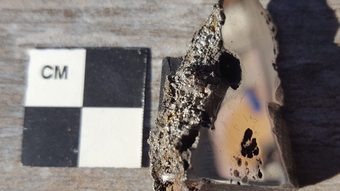
A group of researchers from Canada announced that they had discovered two new minerals after analyzing a 15 tons meteorite fell In Somalia, in East Africa. Scientists are still analyzing a third mineral.
Since scientists at the University of Alberta used a 70 g sample of the meteorite, other unknown components are likely to be present in it.
The space rock, the ninth largest ever found on the planet, was discovered in a sparsely populated area of the country, and contains many elements not previously found in nature.
The meteorite is about 2 meters across and began to be studied in 2020, but for generations it has been the subject of songs and poems of shepherds from the Hiran region, where it is called “Nightfall”. Locals also sharpen their knives on the metal surface.
according to University announcementthe minerals have been named “elaliite” and “elkinstantonite” — in honor of the name of the meteorite, named “El Ali,” and researcher Lindy Elkins-Tanton, principal investigator on NASA’s Psyche mission.
Worth clicking: Learn the differences between comets, asteroids, meteors, and meteoroids
Chris Hurd, a professor in the Department of Earth and Atmospheric Sciences and curator of the collection, said in the release that similar minerals had already been synthesized in laboratories in the 1980s, but were not found in nature.
“I never thought I’d get involved in describing new minerals just by working on a meteorite,” Hurd said.
Researchers would like to obtain larger fragments of the rock for analysis, but unconfirmed reports say it has been taken to China, possibly to prepare for a future auction.
Read below: Learn about the differences between comets, asteroids, meteors, and meteoroids
